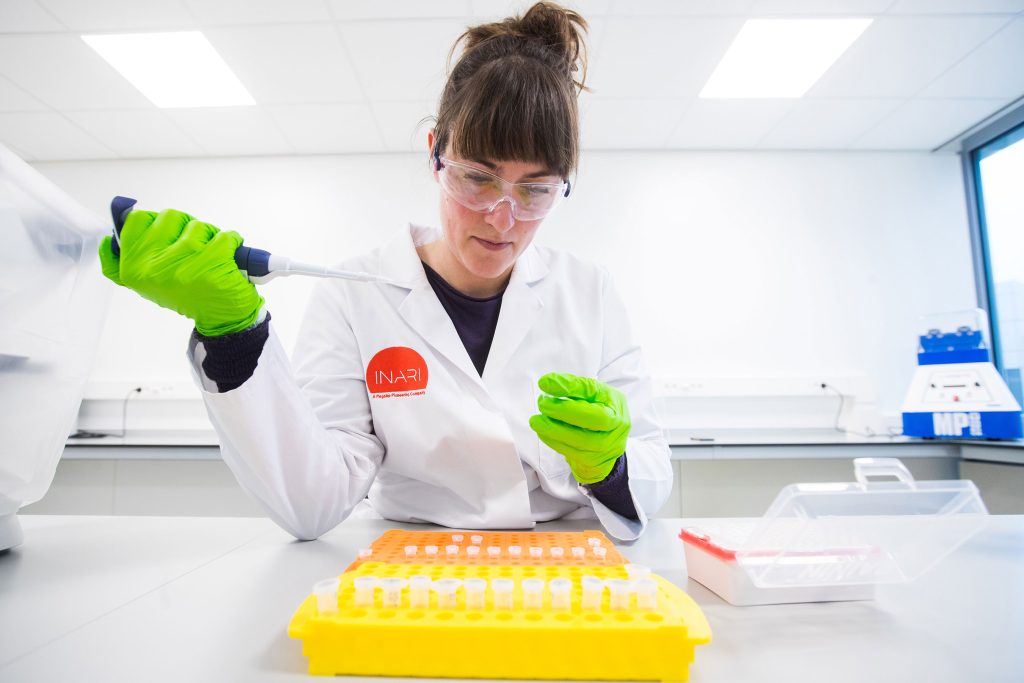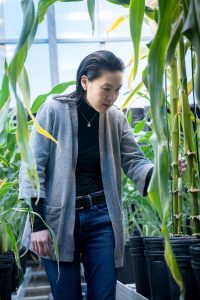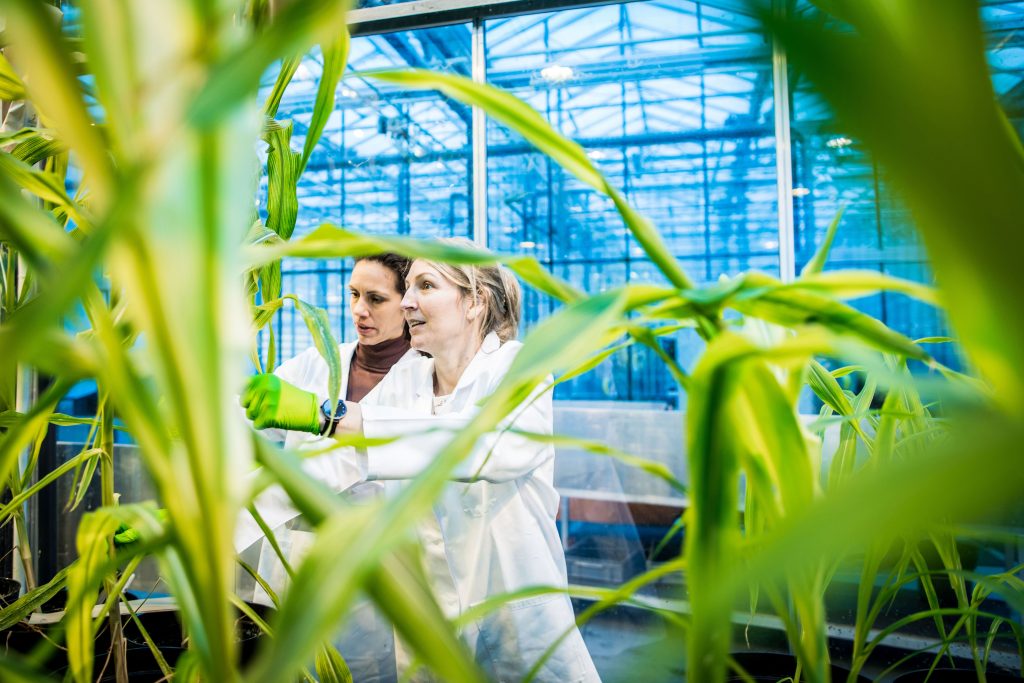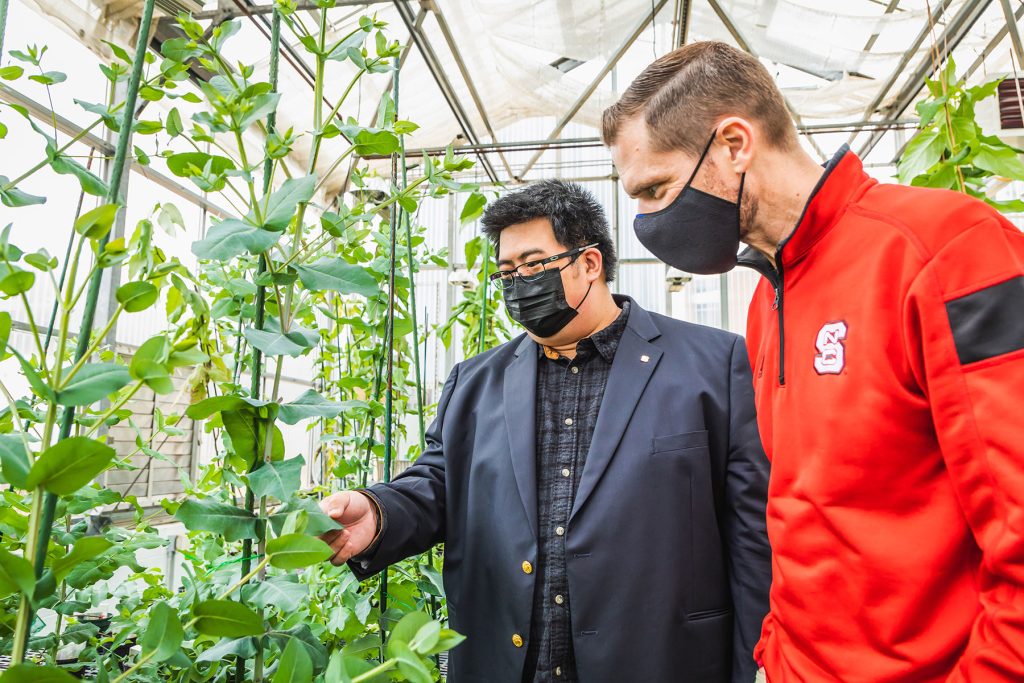REPOST
From Pharma to Farm: Can CRISPR Feed the World?
Now in its second decade, CRISPR genome editing technology is being used to revolutionize agriculture—just in time to help us adapt to climate change
A decade has passed since the landmark paper by Jennifer Doudna and Emmanuelle Charpentier describing their Nobel Prize–winning research appeared in Science. The research, of course, was about the “genetic scissors” known as CRISPR. Over the past 10 years, improved versions of these scissors have been introduced by many researchers, and many gene-snipping applications have been explored. To date, the most prominent applications have been medical applications, such as therapies meant to treat patients with sickle-cell anemia.
But CRISPR is poised to make an even broader impact on the world. Far from being limited to modifying the genomes of human cells, CRISPR is quite capable of modifying the genomes of plant cells. Indeed, as Doudna explained in a recent interview on the Babbage podcast, the earliest practical CRISPR applications that will seize public attention will be in food and agriculture. She said, “The most widely impactful applications of CRISPR, for many of us, are going to be in the agricultural sector, at least in the near term.”
How is improving plant traits with CRISPR technology different from doing so with the conventional methods of genetic mutagenesis used in plant breeding? “It adds precision to the toolbox,” Doudna says. Plant breeding with chemical mutagens, for example, has relied entirely on introducing random changes into plant DNA. In addition, it is difficult to make multiple changes in a plant at the same time, which means multiple rounds of manipulation—each one adding to the risk that undesired changes will occur. CRISPR technology removes that randomness, offering precise alterations to specific DNA sequences—either one at a time, or multiple changes in a single experiment.
CRISPR wheat
After researching wheat for two decades, Catherine Feuillet, PhD, the CSO of Inari Agriculture, is all too aware that plant genetics research can move slowly. Early in her career, she spent a decade isolating a single wheat gene.

Despite knowing the value of patience, she also recognizes when time is of the essence. That time is now: The world of agriculture needs to do better than it has in the past if it is to solve an extremely complex problem—feeding more people while facing increasingly dire resource constraints. Agriculture has been increasing production, but at the environment’s expense. “We cannot continue this trend,” Feuillet asserts. “Climate change is here now. But we cannot compromise on yield because we have more people to feed.”
Feuillet imparts three urgent truths: We don’t have a choice. We need to be fast. We need to be efficient.
The good news, she says, is that today’s revolution in technology can, for the first time, address these challenges.
Inari conducts genome editing of soy, corn, and wheat—the three crops that feed the world and impact the environment the most. Indeed, Feuillet asserts that Inari is the only company working on genome editing these crops. “We are the bold ones,” she declares.
Inari is not focused on improving flavor or other traits for the consumer. The mission is to impact agriculture. It is about sustainability. Feuillet is in this business because millions of people are starving, and she wants to help agriculture solve the problems that prevent it from feeding the world.
To do that, Inari targets yield and efficiency of resources like water and nitrogen. “We don’t go after these traits because doing so is easy,” she insists. “We go after these traits because doing so is necessary.”

Inari uses its SEEDesign technology platform, which Ponsi Trivisvavet, Inari’s CEO, explains pairs predictive design with advanced multiplex gene editing to unlock the full potential of seeds for a more sustainable food system. Inari has CRISPR tools for cutting DNA, fine-tuning promoters, and inserting enhancers. The company also has an internally developed technology to replace amino acids (using a proprietary base editing technology.)
Inari researchers are using artificial intelligence (AI) to move from trial-and-error plant breeding approaches to a predictive design approach. “[It is] possible to use machine learning to drastically speed up breeding and editing pipelines,” relates Rania Khalaf, PhD, Inari’s chief information and data officer. “[We are] running computer models of trials that would be otherwise impossible because of the vast number of possible combinations.”
Everyone can make changes in a genome, Feuillet observes. But no one really knows what changes are needed. Improving the biology of a plant is more complicated than simply deleting genes. Feuillet wants to modify multiple sequences, but not through old-fashioned breeding, which takes 15 years and is blind to the specific genes involved. Instead, she wants to use CRISPR, which can act on selected targets and obtain results in just two years.
Before joining Inari, Feuillet was the head of trait research at Bayer Crop Science. Why did she join Inari? She found that innovating within a large, established company can be difficult. At Bayer, she spent two years trying to convince Bayer to pay more attention to gene editing. But the technology was considered too bold, too risky. (Ironically, Bayer now partners with, and invests heavily in, Pairwise—a company focused on gene edited crop plants.)
If Feuillet had stayed at Bayer, she might have been able to start a pilot project with a few scientists. At Inari, she is part of a 200-person team that is devoted to realizing gene editing’s promise in agriculture. “It will take time, and it will be hard,” notes Feuillet. “But we are on our way.”

Tangible evidence that Inari is indeed on its way will become available soon, Trivisvavet declares. She says that the company will bring its multiplex-edited soybeans and corn to U.S. farmers in the next couple of years. These seeds will incorporate edits designed to increase crop yields while enabling a reduction in resources expended per bushel.
CRISPR paper
“Everybody and their mother” can launch startup companies for genome-editing-based therapeutics, says Rodolphe Barrangou, PhD, a professor in the Department of Food, Bioprocessing, and Nutrition Sciences at North Carolina State University (NCSU) and the editor-in-chief of The CRISPR Journal. Presumably, starting genome editing companies for other purposes is a lot harder. Barrangou should know. Besides being a professor and an editor, he is the CEO of TreeCo, a company that is using CRISPR technology to enhance trees for the forestry industry and the environment.

Barrangou estimates that 10,000 to 100,000 people are going to benefit from a CRISPR gene therapy over the next decade. Many more people will benefit from CRISPR-edited crops and livestock. And even more people—everyone living on Earth today and in the future—will benefit from CRISPR trees.
Barrangou sums up his thinking as follows: If we’re going to solve big problems, we need big solutions. Our biggest problem is climate change. And the biggest solution is CRISPR. No other technology has as much potential to breed more sustainable trees and promote sustainable forests. To address climate change, we must focus on trees.
After his eureka moment, Barrangou started to put together the team and the tools to start this work. At the time, there was just one problem: a microbiologist by training, Barrangou didn’t know anything about trees.
Help came from one of his colleagues, Jack Wang, PhD, assistant professor of forestry and environmental resources and director of the Forest Biotechnology Program at NCSU. Wang had been working on bringing CRISPR to forestry as an academic exercise, but it was Barrangou’s entrepreneurial spirit that convinced Wang to be TreeCo’s CSO.
The forestry industry (which makes wood products such as pulp, paper, wood, cardboard, and toilet paper) is the same size as the automobile industry. However, being large isn’t the same as being technological advanced. According to Barrangou, the forestry industry is “about 20 years behind on the use and harnessing of molecular biology.”
Barrangou expects that when the forestry industry embraces CRISPR, trees will be bred about 10 times faster. Moreover, the industry will enhance biodiversity, build resilience, engineer fiber content, improve efficiency, reduce water usage, and improve pest resistance and yield. There are hardly any limits to what CRISPR can do to create more sustainable and healthier forests. “We’re going to run out of resources before we run out of ideas,” notes Barrangou.
What traits is TreeCo targeting? Fiber sustainability is one. When editing is used to vary the chemical linkages and overall composition of wood, the processing of bioproducts can become easier and less energy intensive, fiber productivity can be increased, and carbon footprints can be reduced.
TreeCo also aims to make trees that are more amenable to bioenergy production. Today, biofuels and bioethanol come from sugar and corn. But TreeCo wants to provide a source of biofuel other than food crops, so that the biofuel industry’s land needs won’t be met at agriculture’s expense.
TreeCo is also working to improve forest health and resilience by ensuring that trees are resilient at the genetic level. This approach has merit because trees live for decades and have difficulty adapting to rapid changes in the environment. One example of how TreeCo is taking this approach is in the development of hemlock trees that are resistant to the hemlock woolly adelgid (HWA), an invasive insect and notorious pest. “Unless we use a transformative technology like CRISPR,” Wang warns, “there are limited options to address these issues in forestry.”
This field has worked for a long time on fundamental science with very little impact on the real world. This concerns Wang, given the issues that forests face today. The company, he says, is taking its “first step outside of fundamental, basic research.”
Today, TreeCo is growing CRISPR-edited trees at speed and at scale in a greenhouse that is a short walk from Barrangou’s office on the NCSU campus. The company even has CRISPR paper. But it will be a slow process. Forestry is challenging to scale. Some of the projects that Barrangou and Wang have been working on for the past three years won’t be fully commercialized at scale until around 2046.
Still, Barrangou has the patience and commitment, he thinks, to run this decades-long experiment. “If I don’t do it,” he proclaims, “nobody’s going to do it!”
CRISPR berries
It is fortuitous that 14-year-old Ryan Rapp had a paper route that proved to be less than lucrative. He found a bigger paycheck picking vegetables for the local farmstand in the small town of Mendon, MA. Little did he know that his new gig would lay the foundation of his career. Summers spent working at the farmer’s market led to a job at a bigger greenhouse in town, which inspired him to study botany in college.
Continuing his journey, he earned a doctorate at Iowa State University and then secured industry positions at Monsanto and Illumina. Today, he is the CTO of Pairwise—a company that is using genome editing to improve fruits and vegetables.

When Pairwise started four years ago, notes Rapp, it had the technology it needed, including base editing licenses from David Liu, PhD, a researcher at the Broad Institute and Harvard University. What the company didn’t have was laboratory space, people, genomic sequences of plants, etc.
Pairwise quickly got its affairs in order, and now it has a product poised to enter the market. That product is mustard greens. These leafy greens have more nutritional value than kale or spinach but come with a pungent wasabi-like taste. To improve their taste, Pairwise scientists edited out parts of the biochemical pathway that create that pungent compound while leaving the health benefits.
At the Future Food meeting in San Francisco, Pairwise recently launched a new brand—Conscious Foods—to market its mustard greens, which will be called Conscious Greens. According to Tom Adams, PhD, the CEO of Pairwise, the company is prepping to launch Conscious Greens next year. The greens are the first of 14 different crops that Pairwise plans to introduce.
Another food is blackberries. Adams tells GEN that when Pairwise surveyed people who eat blackberries, 85% said the number one thing they dislike is the seeds. So, he says, “We are getting rid of the seeds.”
Depending on how they are grown, berries can take 9 to 12 months to produce their first crop. Pairwise has edited plants that can flower in six weeks. The company is also editing out the thorns. The idea is to improve worker safety and speed the picking process simultaneously. This product, Adams estimates, is still a few years from hitting grocery shelves.
Pairwise, which relies mostly on Cas12, maintains an internal program to develop novel editing tools. Rapp thinks that both CRISPR editing and precision base editing have their place in the company’s work.
Rapp finds that his experience with genetically modified organisms (GMOs) at Monsanto informs his work at Pairwise. With Monsanto’s transgenes, he explains, the farmers saw the value, and many technologies were applied for the grower’s benefit. By contrast, the consumers did not see the value. Now, with Pairwise’s products, the consumer can see the value. They have the opportunity to obtain something that they can’t have without gene editing. Everything will be transparent, and consumers can make informed choices.
Time will tell how consumers react to CRISPR berries. This whole field, Rapp notes, is an experiment.
___________________________________________________________

Celeste Solum is a broadcaster, author, former government, organic farmer and is trained in nursing and environmental medicine. Celeste chronicles the space and earth conditions that trigger the rise and fall of modern & ancient civilizations, calendars, and volatile economies. Cycles are converging, all pointing to a cataclysmic period between 2020 to 2050 in what many scientists believe is an Extinction Level Event. Tracking goods and people will be a part of managing the population during this convergence.
- Backstories on tracking
- Technologies
- Infrastructure
- Diseases, Testing, Vaccinations, and Sensors (including nCov and the new Phytophthora ~the plant-destroyer
- Experiences
Website: https://shepherdsheart.life/blogs/news/ celestialreport.comGenSix, Keynote Speaker, True Legends, Ancient Cataclysms & Coming Catastrophes https://celestialreport.com https://www.facebook.com/ShepherdessCeleste Books: Electromagnetic Radiation Protection Solutions 7- Thunders Revealed Inspirational Homestead Recipes
Videos: Celestial Report, Special Broadcasts, Breaking News by Subscription